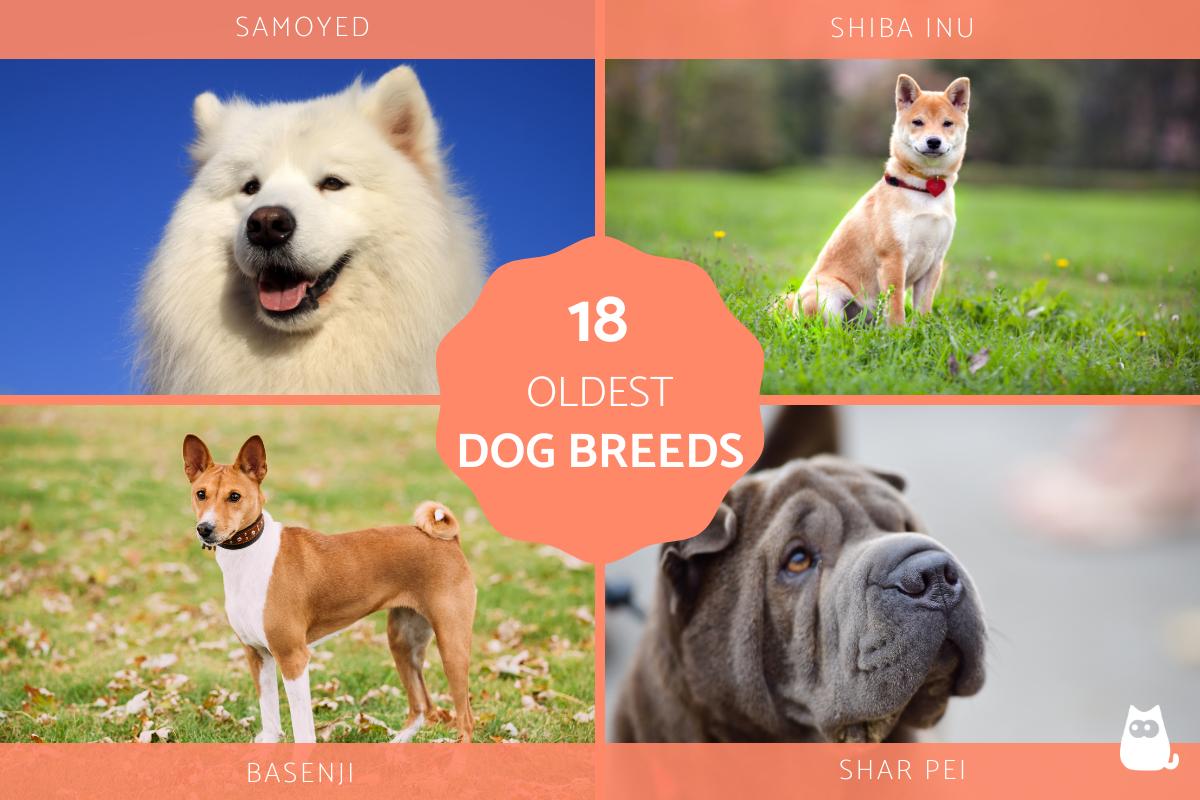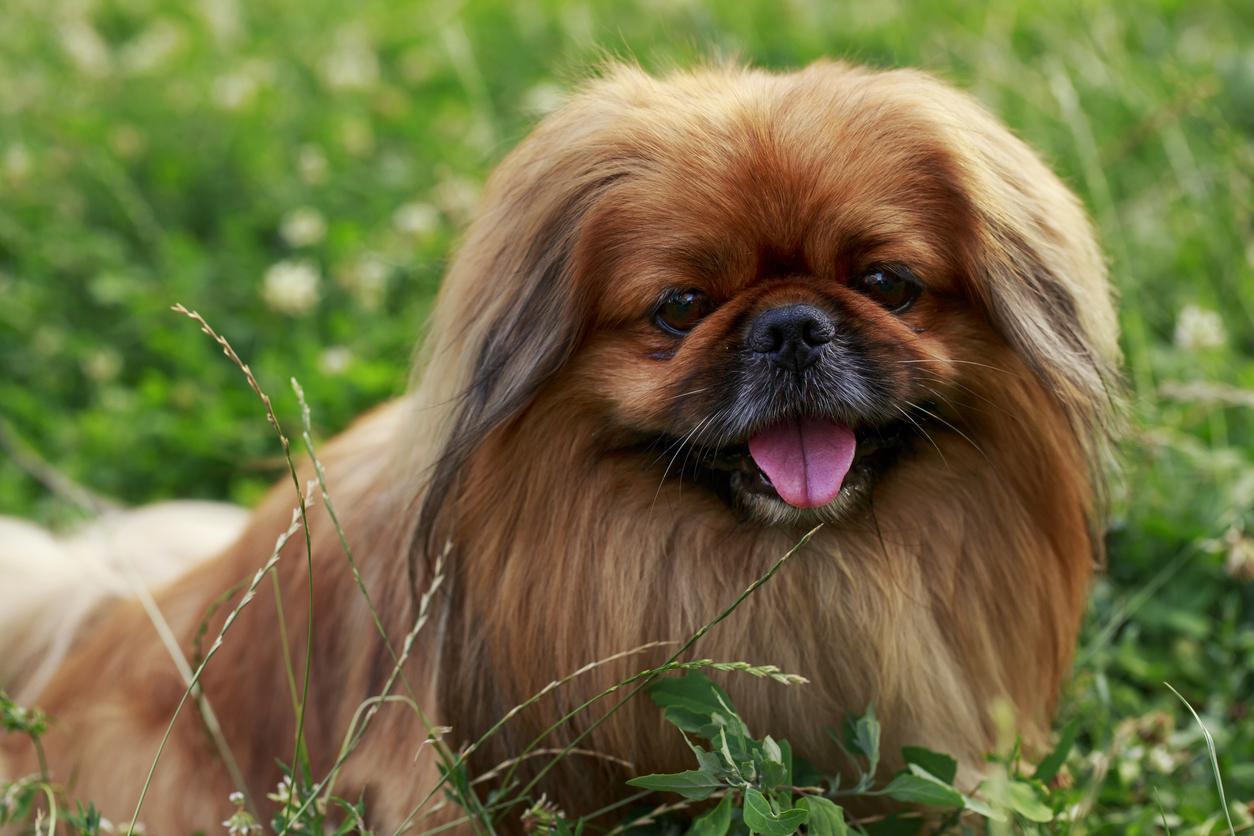Oldest Dog Breeds in the World

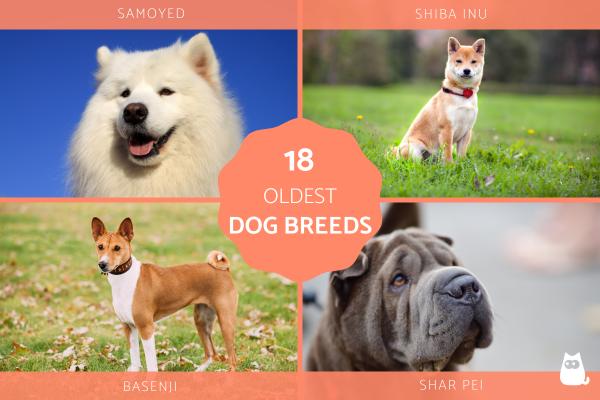

See files for Dogs
It should be no surprise that there are ancient dog breeds since it is estimated that humans and dogs have lived together happily for between 2,000 and 3,000 years. Although historical sources do not provide a precise date, it is widely believed that the domestication process of wolves began between 10,000 and 30,000 years ago[1]. This is because wolves are the ancestors of current domestic dogs, changing both physically and psychologically over this time to become friendly pets.
Many of the most popular dog breeds today emerge from the 18th and 19th centuries, breeds such as the German Shepherd or Boxer Dog. Surprisingly, some breeds have survived thousands of years and evolved alongside humanity, maintaining certain original features in their appearance and character. AnimalWised invites you to meet the 18 oldest dog breeds in the world according to scientific research and reveals a little more about their origins. We also provide photos of each breed to see what they look like.
- Characteristics of ancient dog breeds
- Basenji
- Shaanxi Xigou
- Tibetan Mastiff
- Siberian Husky
- Greenland Dog
- Alaskan Malamute
- Shiba Inu
- Akita Inu
- Shar Pei
- Chow Chow
- Eurasier
- Samoyed
- Finnish Spitz
- Japanese Chin
- Tibetan Spaniel
- Pekingese
- Lhasa Apso
- Shih Tzu
Characteristics of ancient dog breeds
The oldest dog breeds in the world share some physical characteristics as well as personality traits. They have to be dogs with strong bodies and well-developed muscles. They were often compact and resistant with coats where shades of red, brown and tan predominate.
In terms of character, they are usually intelligent dog breeds that are active and very independent. These ancient breeds show a great aptitude for learning and often prefer to make decisions on their own, having greater autonomy than some other dogs. Additionally, they usually have very sharp senses and remarkable instinctual facility when it comes to hunting or protecting resources within their territory.
The reasons for this is because they were used as working dogs for ancient civilizations. This is not to say they were not also enjoyed as companion animals, but they had to be able to fare well in the often harsh living conditions of their guardians.
As we will see with our list of the oldest dog breeds, they can make excellent pets. They do tend to need a lot of attention and particular effort needs to be made in terms of training and socialization of these dogs. If these are not carried out, then it can lead to a greater likelihood of behavioral problems down the line.

Basenji
The Basenji is considered the oldest dog in the world according to a scientific study which compares genomic analysis of 161 current dog breeds[2]. It is estimated these origins begin on the African continent, where they were used for hunting and tracking prey. Their image was portrayed on some Egyptian tombs and are believed to be represented in hieroglyphs from the time.
The Basenji has gained popularity for some peculiarities in their nature. For example, this oldest dog breed does not emit the characteristic sound of canine barking, instead producing a high-pitched howl which almost resembles a laugh or yodel. This is why they are also among the breeds which bark the least. Additionally, they often groom themselves in a very feline manner and are often not fond of water. The Basenji in the photo below is a puppy.
If you adopt a Basenji, you may want to give them a name which relates to their ancient dog breed heritage. You can do so with our list of Egyptian dog names.

Shaanxi Xigou
A variant of the Xigou dog breed, the Shanxi Xigou is considered the second oldest dog in the world and its history has been traced back to 685 BC during the Tang Dynasty. This dog has particularly unique profile with its slim body and slightly sloped face. Its ancient role was as a hare hunter as well as a protective watch dog. It is believed by some that this is the origin of all types of sighthound breeds, including the various Greyhounds.
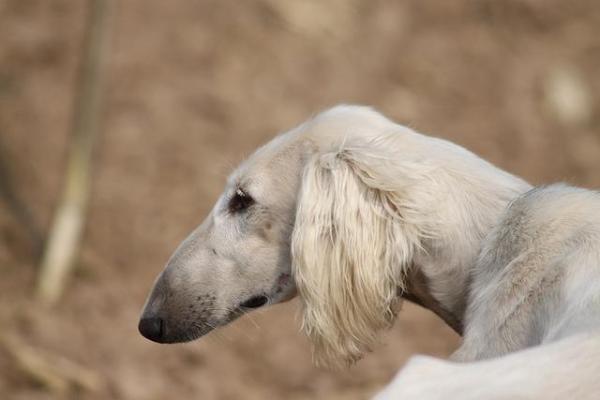
Tibetan Mastiff
Also known as the Tibetan Bulldog, the Tibetan Mastiff is considered the progenitor of all breeds of Mastiff dog. Its lineage has recently been shown to have diverted from the grey wolf some 58,000 years ago, more than the other 11 dogs which were used in this particular study[3]. It is a powerful dog with a muscular build and particularly dense coat, accentuating its already large frame. It was used for looking after flocks of livestock and was the traditional dog to guard Tibetan monasteries.
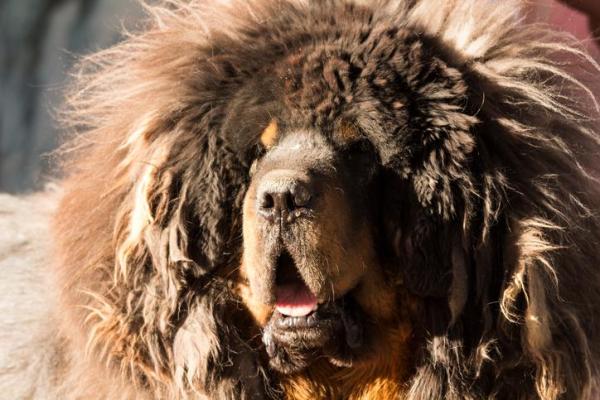
Siberian Husky
Siberian huskies accompanied the Chukchi tribe, the group of native people who inhabited the cold territory where Siberia is today (which still happens to be pretty cold). In principle, they are used as both working dogs and guard dogs. They grazed, pulled their owner's sleds and protected home territory from invaders.
The inherent strength of the Siberian Husky is explained by its origins. In the extreme conditions of this now Russian territory, only the most resistant and adaptive dogs survived. It was precisely thanks to dedication and skills of these dogs that the indigenous inhabitants of this cold and inhospitable land could survive. This is both in terms of its climate and wild nature.
This ancient dog breed is often confused with a similar looking breed. Learn more with our article detailing the differences between the Alaskan Malamute and the Siberian Husky.

Greenland Dog
The Greenland Dog is one of the oldest breeds in the world and it is estimated to have arrived in Greenland with the Paleo-Eskimo peoples. Its closest relative is the Canadian Eskimo Dog which is genetically identical. It was formally used as a hunting and sledding dog.

Alaskan Malamute
As you can see in the photo below, the Alaskan Malamute closely resembles the Siberian Husky in appearance. It is one of the oldest dog breeds and, as is a trend in this list so far of ancient dog breeds, is also well adapted to the cold. Like the Greenland Dog and Siberian Husky, the Alaskan Malamute was used as a sledding and hunting dog. It is a large and robust dog with great physical capacity.
Their adaptation for cold territories means we need to be careful with their care in more temperate climes. Learn more with our article on how to care for an Alaskan Malamute in summer.
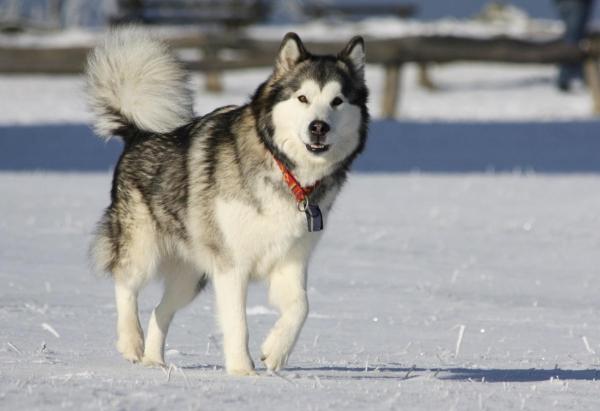
Shiba Inu
The Shiba Inu is a breed that has recently grown greatly in popularity, most likely due to its absolutely adorable appearance. It has a Japanese origin and possible representations of this breed have been found which date from 500 AD. There are, however, some controversies about its origin as some believe it originates in China, while others attest to it coming from Korea.
Learn about other types of native Asian dog breeds in our related guide.

Akita Inu
The Akita Inu gained much popularity in the last century, but its origins go well back into secular traditional Japanese culture. They are strong and resilient dogs with a great ability to adapt to the cold and have a well-marked instinctive behavior. They were historically employed in the hunting of wild animals, but they also fulfilled guardianship and defense functions in homes.

Shar Pei
A distinctive and tender appearance makes the Shar Pei a very attractive breed for many. However, these dogs traditionally stood out for their hunting and herding skills. They usually have an equally distinctive character and can be quite independent.
Currently, traces of their existence were discovered on pottery and ceramics from the 3rd century BC in ancient China. During this time, the Shar Pei was believed to be the faithful companion of farmers who protected their land and livestock from predators and other threats.
Although their look is very tender, they are known to develop various health problems. Learn more with our article on why a Shar Pei won't open their eyes.

Chow Chow
The blue-tongued Chow Chow is also well known for its distinctive appearance. While their tongue and fluffy coat make them look like a Teddy bear, they are not toys. Their origins lay as guard dogs for ancient temples and their demeanor can be fierce when protecting their family. They were also keen hunting dogs. Like the Siberian Husky, the Chow Chow's survival is living proof of its resilience against dramatic climates and natural adversaries.
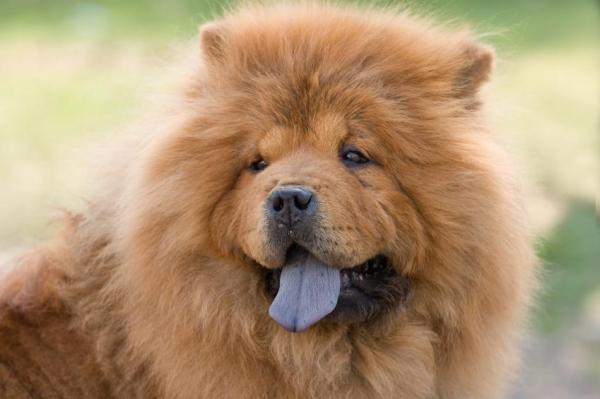
Eurasier
The Eurasier is a dog of German breeding which is much older than was at first believed. It was not until around 1960 that its popularity really began. It is an alert dog of balanced character, but has a tendency to be somewhat aloof.
Learn about the Eurasier and the other types of Spitz dogs in our related article.

Samoyed
The Samoyed enthralled and earned admirers around the world, particularly from the 18th century onwards. Its true origins lie in the original Samoyed tribes which inhabited present day Russia and Siberia. The most reliable evidence suggests this breed is at least 3,000 years old.
Their appearance and character reveal similar traits to its compatriot dog, the Siberian Husky. As seen in the photo below, they are noted for their brilliant and fluffy white coat. They are strong and durable dogs, perfectly adaptable to to cold weather, but also can be quite independent. This doesn't mean they aren't incredibly loving and protective dogs over their family. Historically, they were employed to help shepherd, hunt and pull sleds.
Due to their wild appearance, the Samoyed is counted on the list of dogs that look like wolves.

Finnish Spitz
Indigenous to Finland, the Finnish Spitz was traditionally used for hunting small animals such as rodents. It is well revered for its hunting skills in its native Finland and is considered the National Dog of this particular country.
Discover our extensive list of Finnish names for dogs which you can use if you adopt a Finnish Spitz.
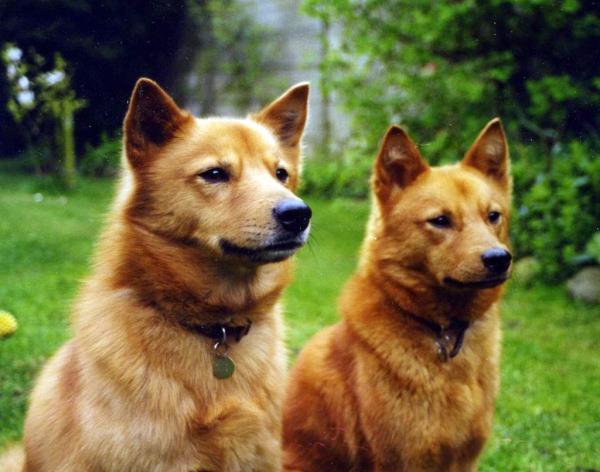
Japanese Chin
Although it bears the name of its neighbor Japan, the Japanese Chin is actually believed to originate in China. It is an independent, intelligent and vert alert dog. Also known as the Japanese Spaniel, they make a great companion and they were revered by many members of Japanese royalty. Eventually, European royalty were also very taken with the dog.
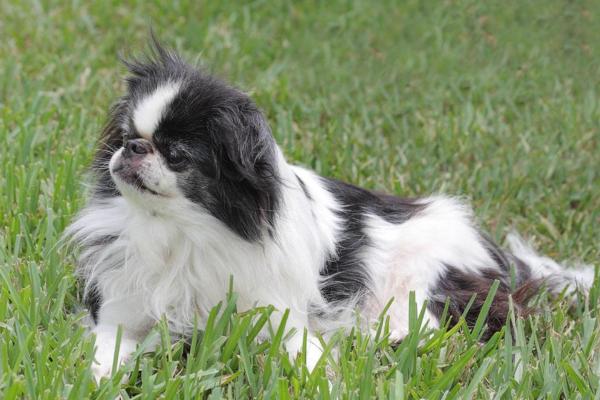
Tibetan Spaniel
Like the Japanese Spaniel, the Tibetan Spaniel is very intelligent despite its size. It was a very popular dog among Tibetan monks who were believed to have used them to spin prayer wheels. Its origin was not known exactly, but their appearance to Chinese guardian lions made them popular and gave them the nickname ‘Little Lions’. Their tender appearance is seen in the photo below. They can be very assertive, so they need a guardian who will be able to provide education and training.
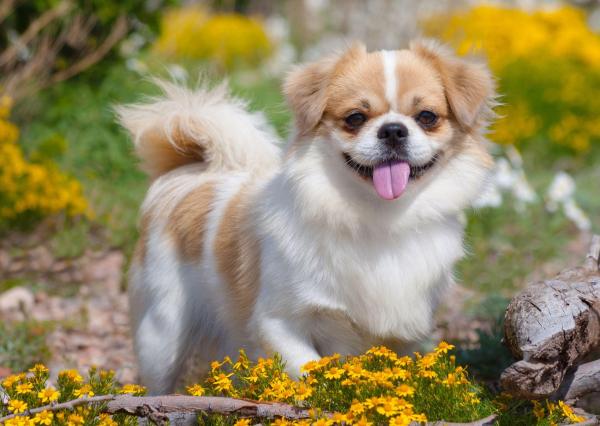
Pekingese
As you may be able to see in the photo below, the Pekingese are physically a little different from many of the oldest dog breeds on this list. However, their character more than anything explains why they have managed to survive so many centuries alongside humanity. These small and furry little creatures possess a great amount of courage and adaptability. In fact, they are one of the most popular ancient dog breeds.
Originally from Beijing in China, they descend directly from the shaggy dogs of Tibet and have inherited very resistant genetics. Presently, the first known stories of its existence are known to date back to the 8th century AD during the reign of the Tang Dynasty. The Pekingese was so appreciated as a companion dog that they became the official mascot of the Chinese Imperial family.
Learn about the differences between the Pekingese and the Shih Tzu in our related article.

Lhasa Apso
The Lhasa Apso gets its name from the city of Lhasa which is sacred to the people of Tibet. These furry canines were already being worshipped by the Tibetan people by 800 BC, but during these early stages rarely accompanied royalty or religious figures. Despite their small size, this is a particularly brave dog which is well adapted to different climates.
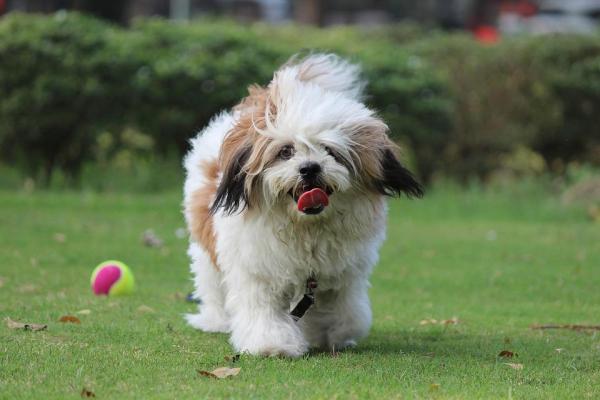
Shih Tzu
As well as being one of the oldest dogs in the world, the Shih Tzu is also one of the most beloved. Whether it is because of its appearance or charming temperament, spending time with them show you it is not hard to understand why. As you can see from the photo, they are also noted for their long and silky hair which grows continuously throughout their lives. Originally from China, the Shih Tzu's name literally means lion and they have a brave character for such a small breed.
Learn how to care for Shih Tzu hair with our guide to doing it at home.
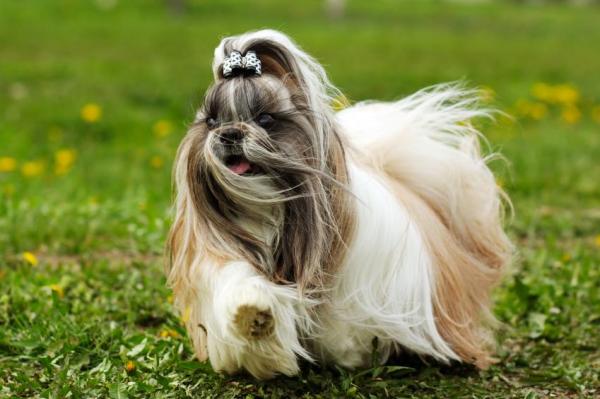

If you want to read similar articles to Oldest Dog Breeds in the World, we recommend you visit our Facts about the animal kingdom category.
1. Yong, E. (2016). A New Origin Story for Dogs. Retrieved from:
https://www.theatlantic.com/science/archive/2016/06/the-origin-of-dogs/484976/
2. Parker, H. G., Dreger, D. L., Rimbault, M., Davis, B. W., Mullen, A. B., Carpintero-Ramirez, G., & Ostrander, E. A. (2017). Genomic Analyses Reveal the Influence of Geographic Origin, Migration, and Hybridization on Modern Dog Breed Development. Cell reports, 19(4), 697–708.
https://doi.org/10.1016/j.celrep.2017.03.079
3. Li, Q., Liu, Z., Li, Y., Zhao, X., Dong, L., Pan, Z., Sun, Y., Li, N., Xu, Y., & Xie, Z. (2008). Origin and phylogenetic analysis of Tibetan Mastiff based on the mitochondrial DNA sequence. Journal of genetics and genomics = Yi chuan xue bao, 35(6), 335–340.
https://doi.org/10.1016/S1673-8527(08)60049-1






 hello!
hello!